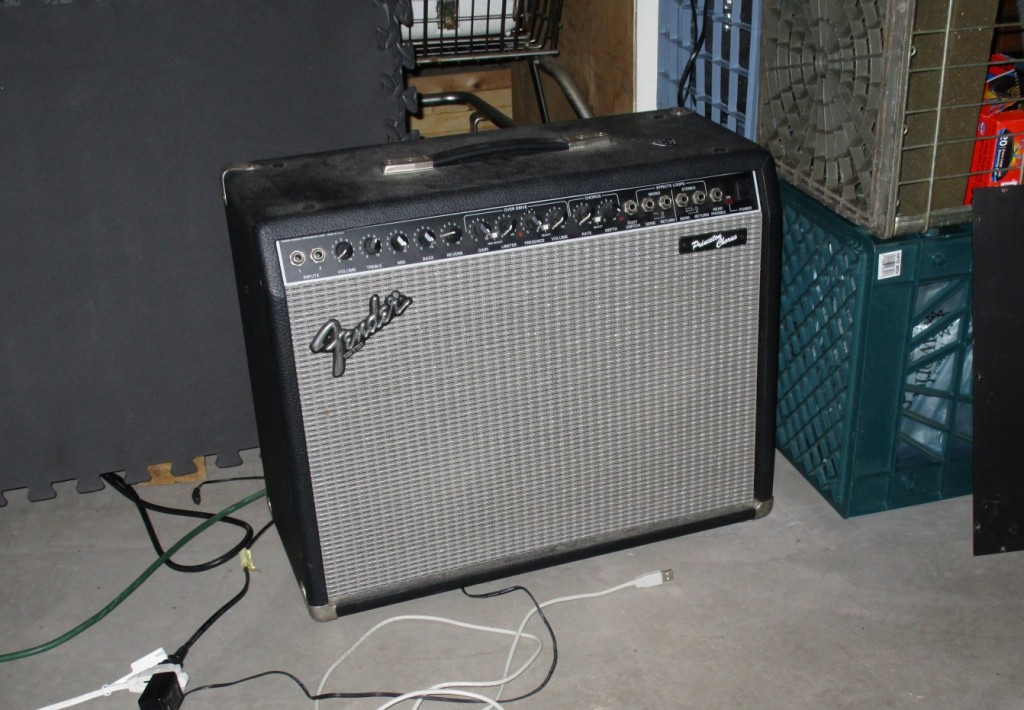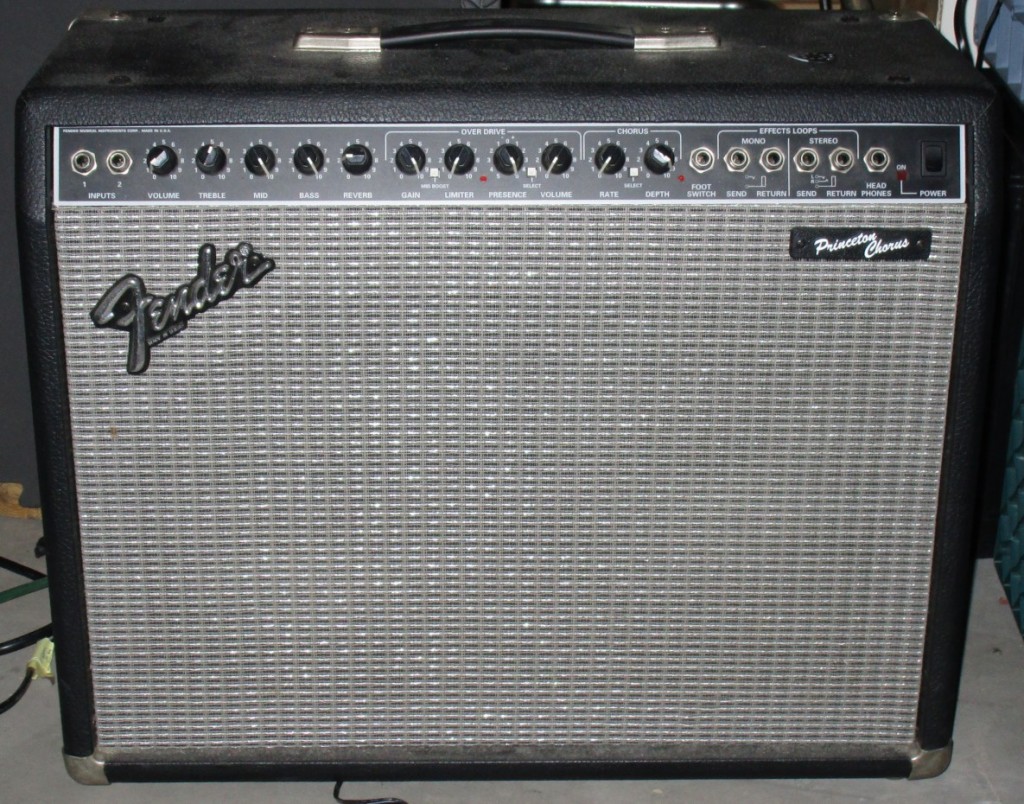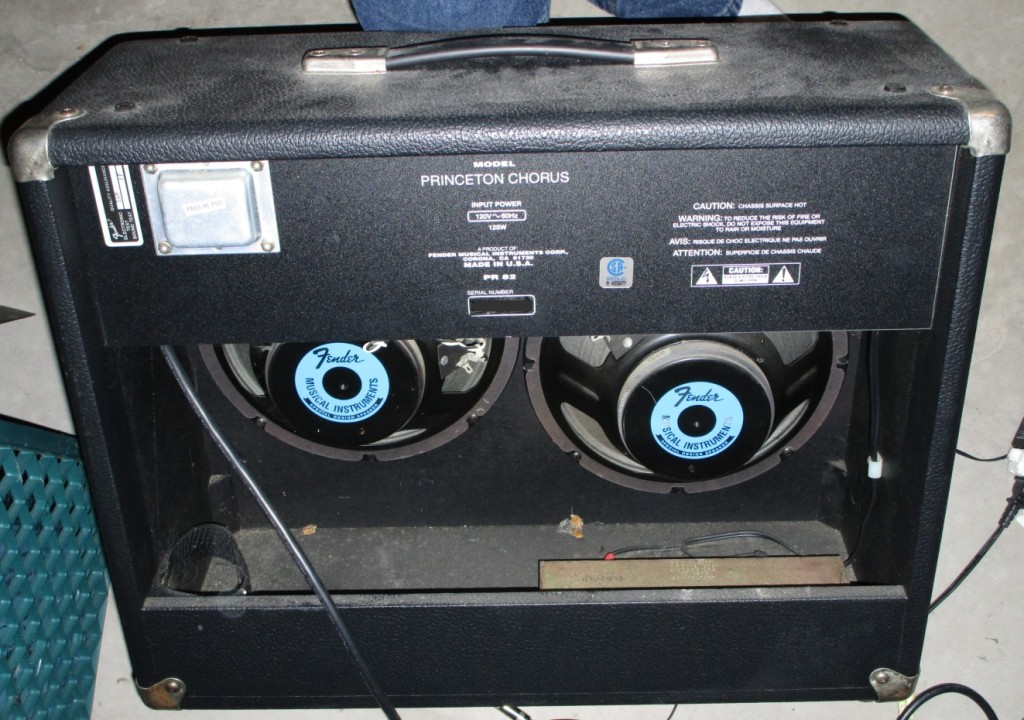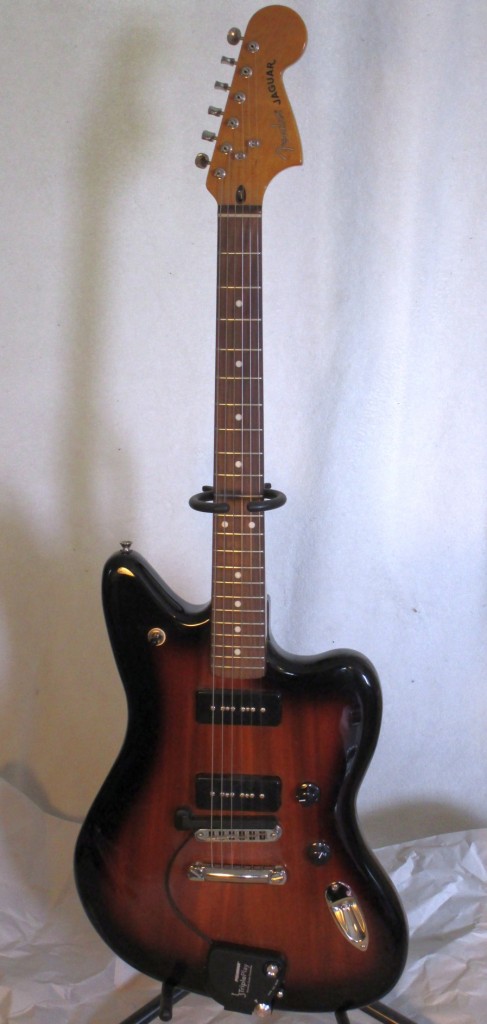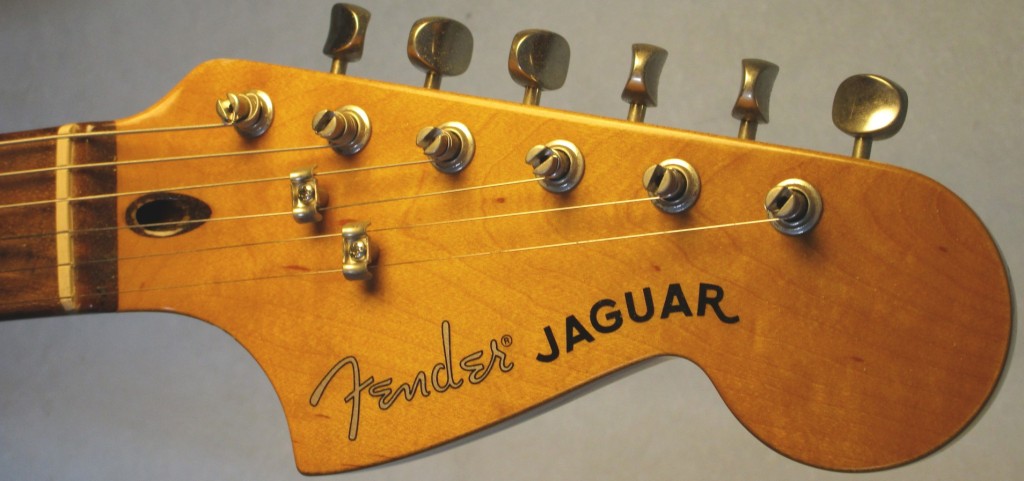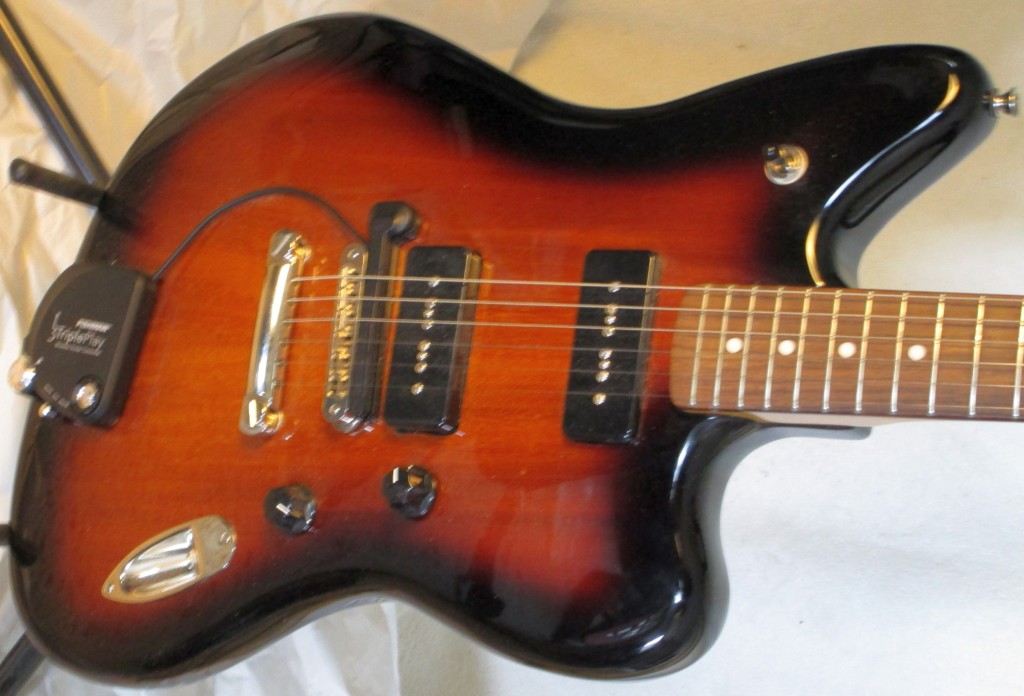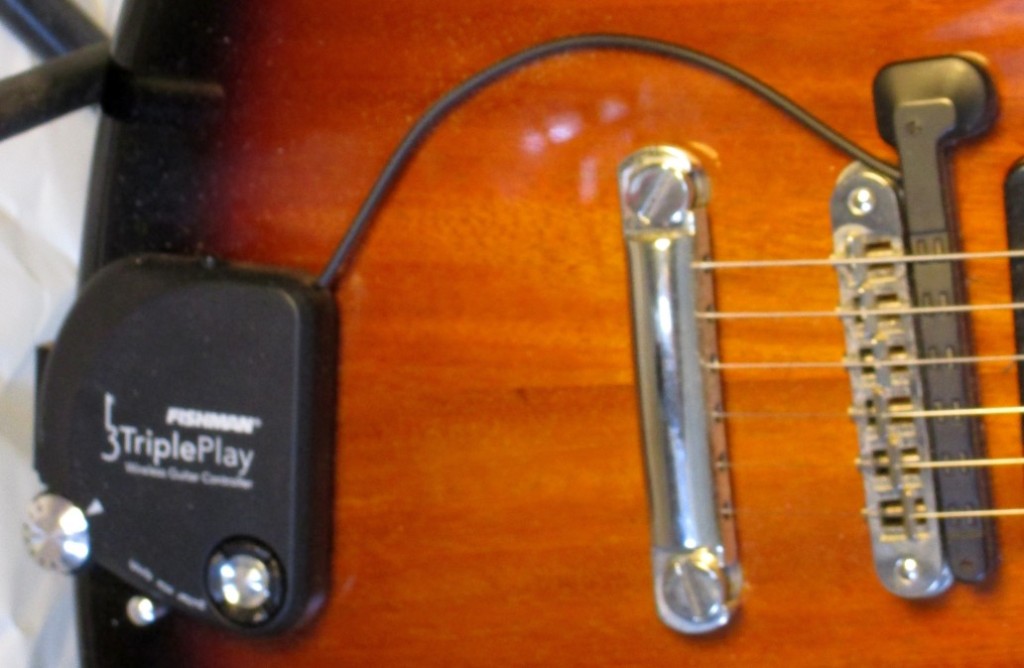You can’t have a guitar page without some amps. So here’s mine.
This is my 1994 Fender Princeton Stereo Chorus. A real stereo chorus amp! Look at the schematic!
This is actually my second Fender Princeton Stereo Chorus. Both are early 90’s models with the black knobs. I still have the other one, but it needs a new volume pot.
I bought this one at Guitars on George a few years ago when they opened back up. I think it’s the same one my friend Brock owned, that he bought off my friend Reese. Or Reece. Whichever. I think I paid around $200 for it? I bought it because I was having issues with my other one.
The other one came from Campbell’s Music about 15 years ago. I paid less than $100 for it because the input jack was busted. $5 fix, and it was as good as new for 10 years or so. But then the volume control got old and started getting noisy.
This amp is alleged to be second only to the Roland Jazz Chorus. I don’t know about that. But I do know that I actually prefer these to my 1970 Fender Twin Reverb. A little. Sure, the Twin is way way way way WAY louder, but I don’t usually need to make the neighbor’s deaf. And their neighbors. And their neighbors.
The clean channel sounds very good for being pure solid state. It doesn’t even have any sort of gimmicky ‘tube sound’ tricks, like compressors or zener diodes. (There is a compressor, but that’s in the distortion channel). The classic Fender 6-6-6 setup works as well here as it does on a ‘proper’ Fender tube amp. You can almost pretend that this is a smooth little tube Princeton.
The distortion channel isn’t very good. I mean, Supernova recorded their first album with one (or maybe its big brother, the Ultimate Chorus), but they’re the only ones. There’s some good sounds to be had with the compression on and the gain turned all the way off. Fortunately, distortion pedals work a treat on the clean channel.
Around back, we see the Fender “Special Design” speakers. These are made by Eminence. Probably. Known for their big bottom end. A certain person I know complained that, although the amp has a lot of bass, it doesn’t “chunk” like a Marshall. Well, it’s a Fender! If you want to sound like Led Zeppelin, buy a Marshall! Or a Valco.
This is my current setup. MXR Distortion Plus, modded with an extra diode in the anti-parallel clipping section (for more second-order harmonics) going through a modified BBE Sonic Maximizer (I replaced the RCA jacks with 1/4″ jacks and wired it up for batteries).
I don’t use the Maximizer as an effect. I’m just trying to get a consistent tone. With most guitar amps, the treble decreases as the volume goes up and the bass decreases as the volume goes down. It’s only there so the amp sounds the same at any volume. An EQ pedal would be better, but mine is a noisy POS. Maybe I should hook up my Radio Shack 15 band stereo EQ again?
SUMMARY:
Condition: 10/10
– Basically like-new
Sound: 8/10
– Clean: 9/10 One of the best clean solid-state amps out there
– Distortion: 6/10 Usable. Keep the gain down.
Light, clean, cheap, and loud. You could play a garage or a small club with this. I have!
